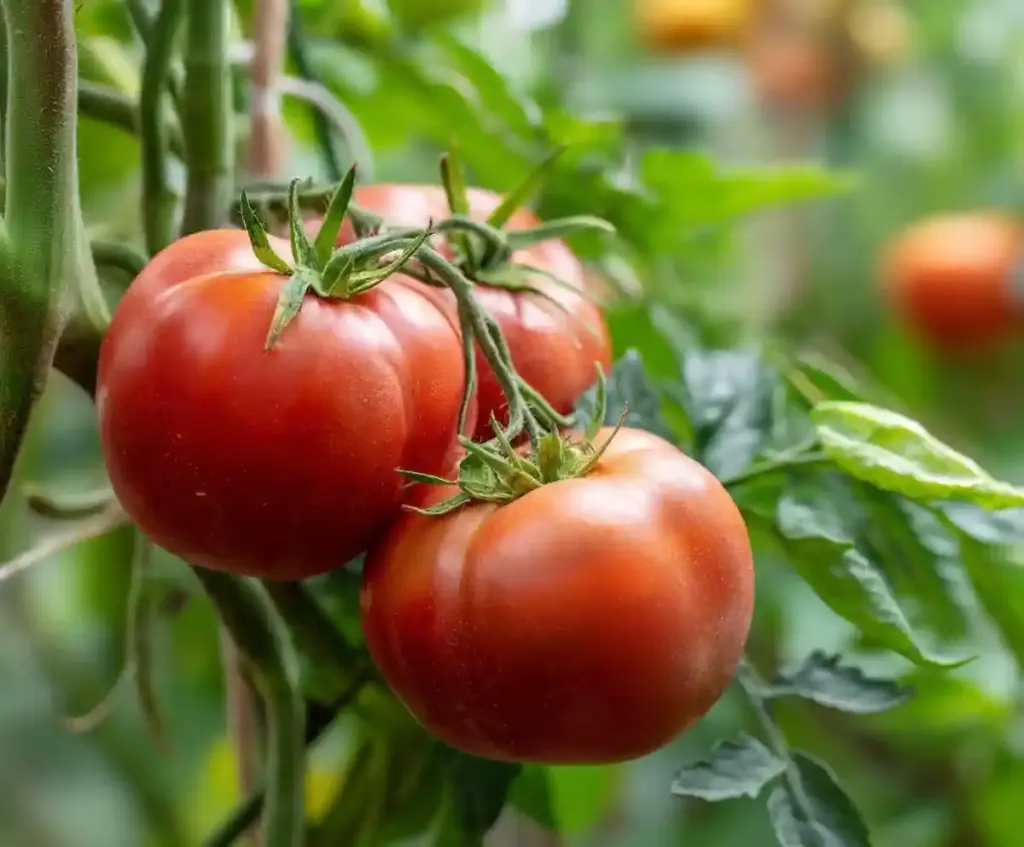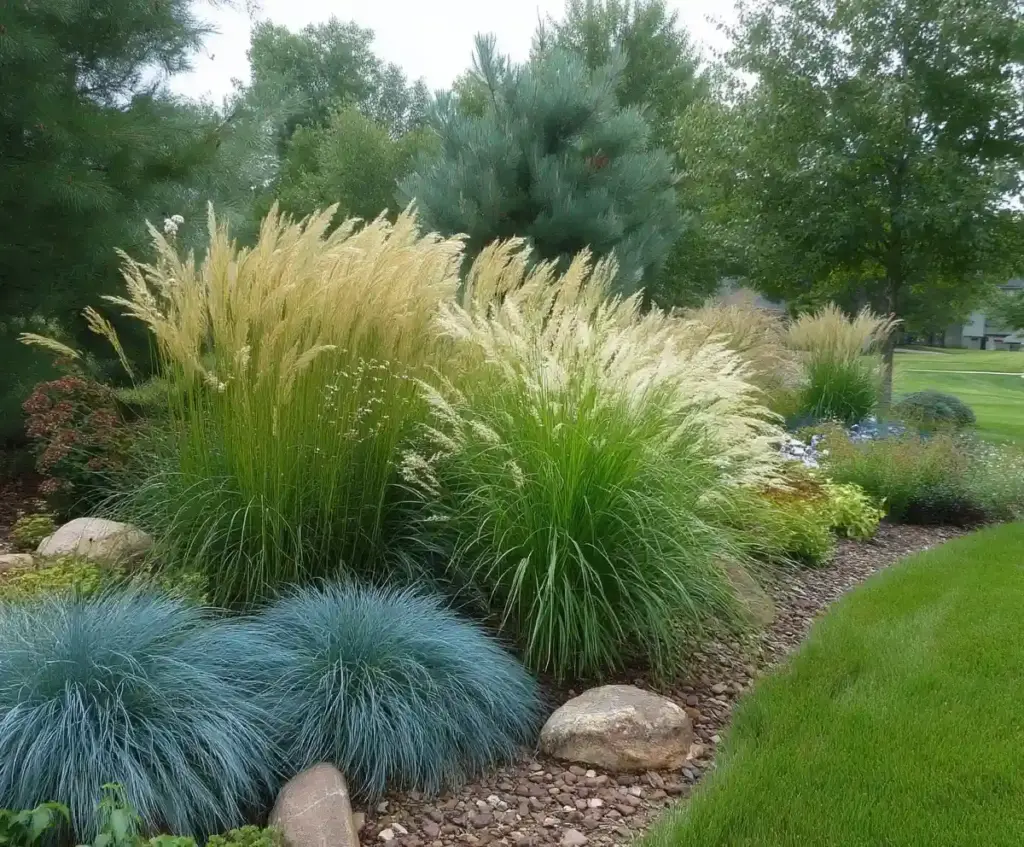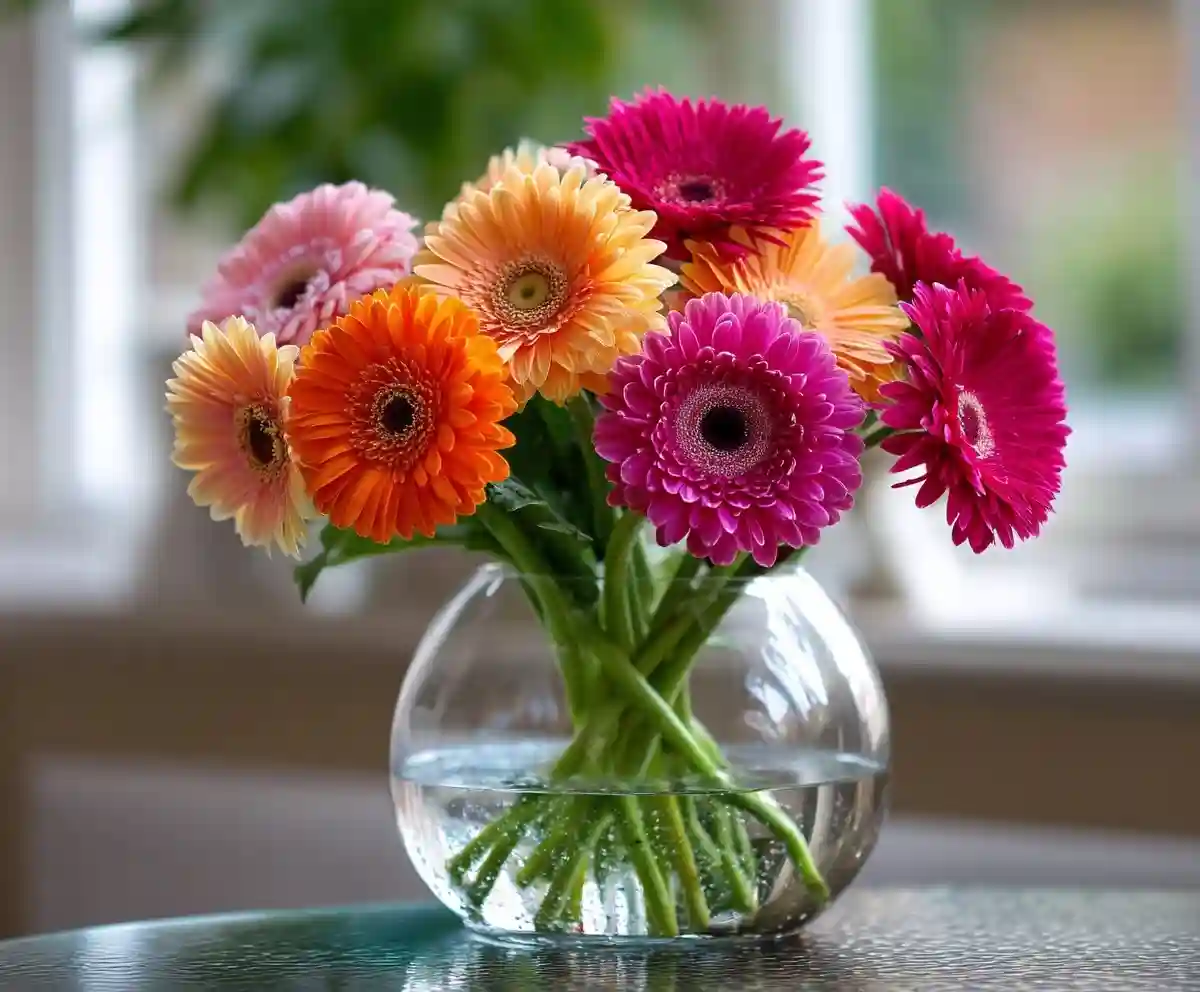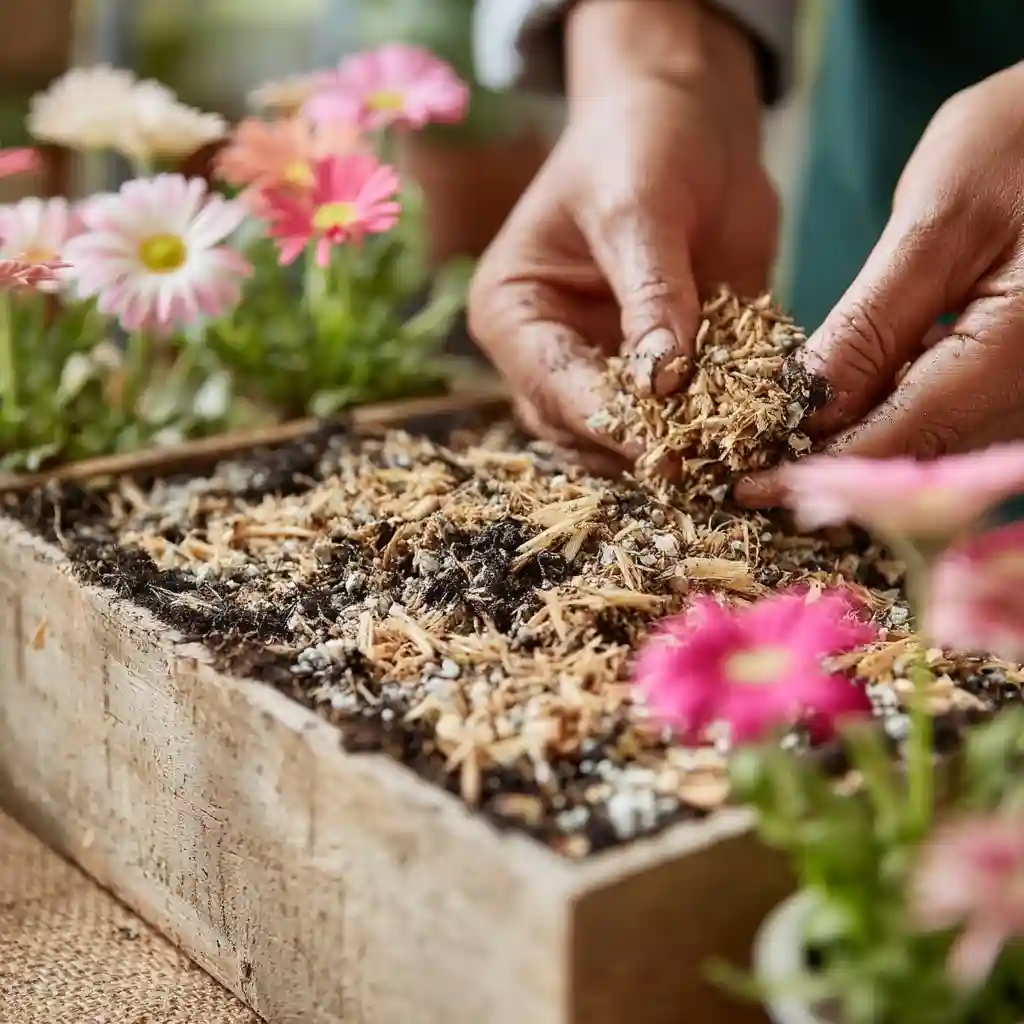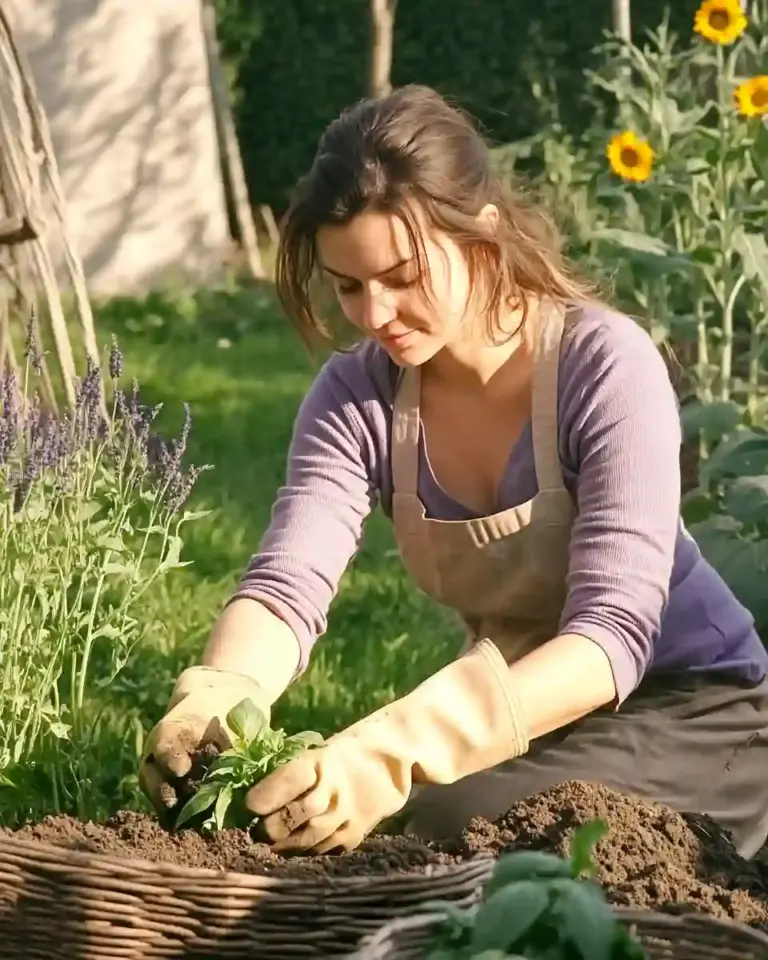Gerbera Daisy Care is more than just watering and sunlight — it’s about creating the right environment for these vibrant blooms to thrive. Whether you’re growing them indoors or out in the garden, these cheerful flowers require a bit of attention to stay healthy and blooming. From choosing the right soil to understanding how to protect them in winter, proper gerbera daisy care can lead to months of bold, colorful blossoms. In this guide, you’ll find practical, easy-to-follow tips that will help your daisies flourish whether they’re planted in containers or beds.
Table of Contents
1. Use the Right Soil for Healthy Growth
Getting the soil right is a foundational step in Gerbera Daisy Care. These plants thrive in rich, well-draining soil that prevents root rot and encourages strong root development.
If you’re planting directly in the ground, make sure your garden soil isn’t heavy or clay-based. Instead, work in plenty of organic matter like compost or peat moss to improve texture and drainage. Raised beds are a great alternative if your native soil holds too much water.
For potted gerberas, use a lightweight potting mix with a slightly acidic to neutral pH (6.1–7.5). A digital soil pH meter can help you check your mix easily. If your soil is too acidic, adding a small amount of dolomitic lime can help balance the pH and make nutrients more accessible to your plants.
Pro Tip: If you’re unsure about pH levels, a safe general application is 1 cup of lime for every 50 square feet of garden soil.
2. Watering Your Gerbera Daisies the Right Way
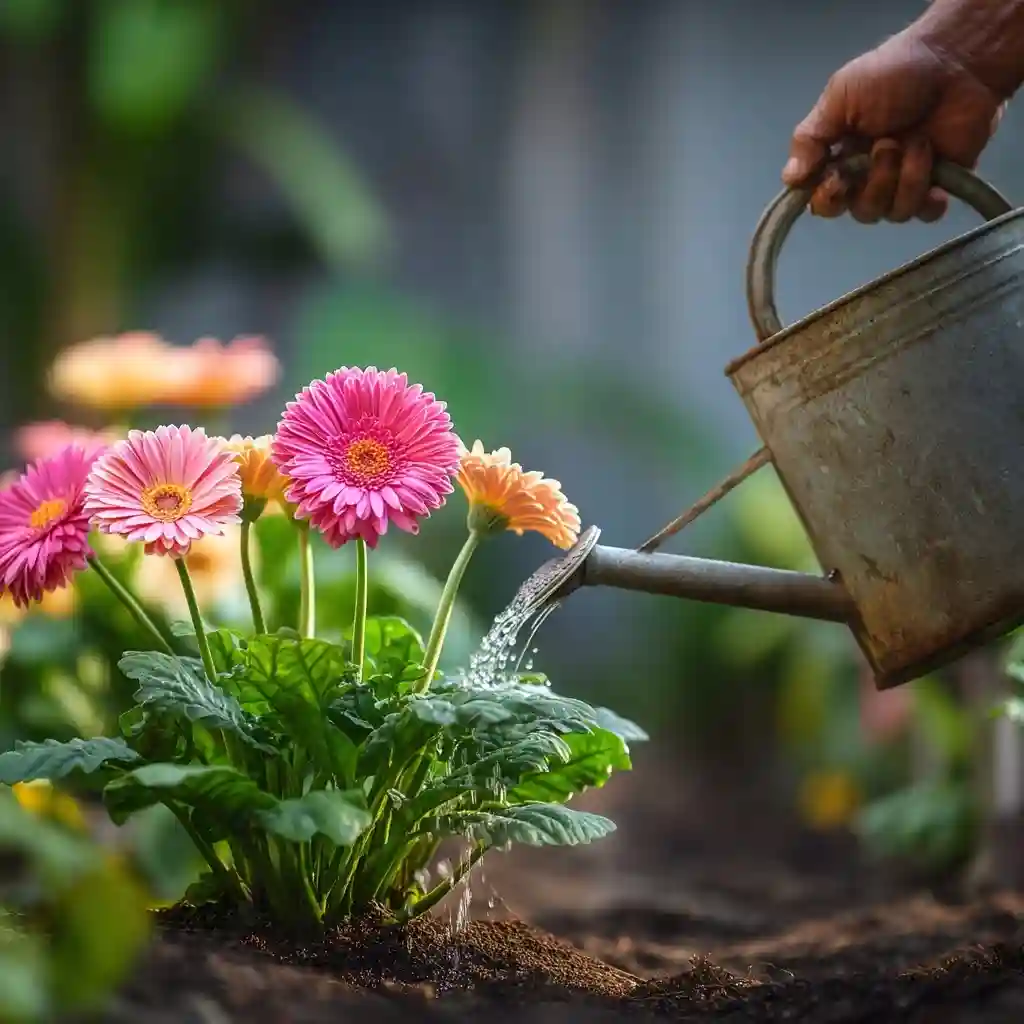
Consistent and appropriate watering is a key part of Gerbera Daisy Care. These plants are sensitive to both underwatering and overwatering, which can lead to root rot or wilting.
For outdoor gerberas, water deeply about once a week, or whenever the top inch of soil feels dry. During hot spells or when establishing new plants, you may need to water more frequently.
Indoor gerberas usually require watering every 3 to 5 days. Always water at the base of the plant and avoid splashing the leaves, as damp foliage increases the risk of fungal diseases.
Be sure to empty any standing water from saucers or trays after watering to prevent soggy roots.
Winter Tip: Cut back on watering in colder months, but don’t let the soil dry out completely. The goal is to keep the roots lightly moist—not wet or bone-dry.
3. Feed Your Gerberas for Vibrant Blooms
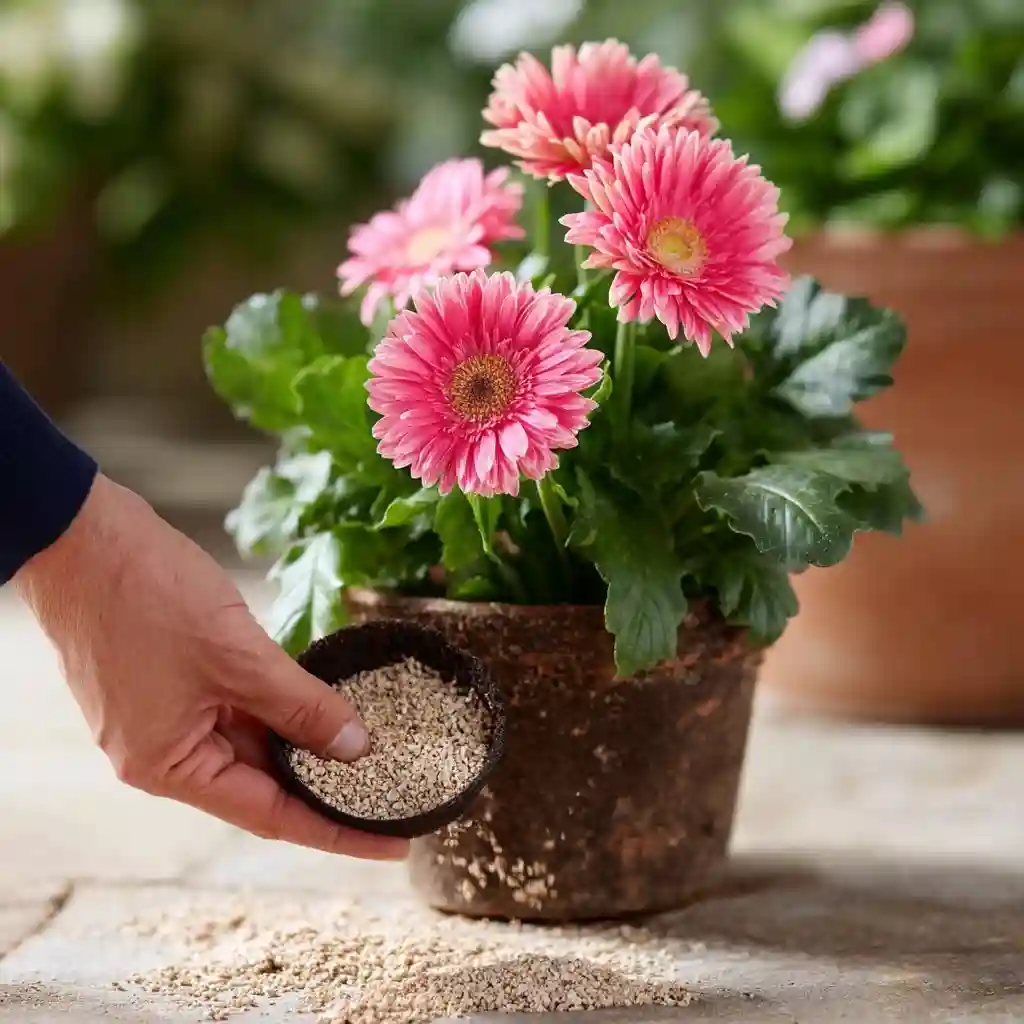
A balanced fertilization routine is essential in effective Gerbera Daisy Care. These flowers are heavy feeders and require consistent nutrients to maintain healthy foliage and frequent blooming.
Start by applying a slow-release, balanced fertilizer two to three times during the growing season. Alternatively, you can use a liquid fertilizer every two weeks for quicker nutrient absorption.
Gerberas are particularly prone to iron and manganese deficiencies, especially when grown in pots. To prevent yellowing leaves or weak stems, choose a fertilizer that includes these essential micronutrients.
For blooming plants, switch to a water-soluble formula with a low phosphorus ratio (like 24-8-16) to avoid flower burn and support continuous flowering.
Pro Tip: A complete fertilizer once a month is a simple way to keep your gerberas looking lush without overwhelming your schedule.
4. Deadhead Regularly to Encourage Re-Blooming
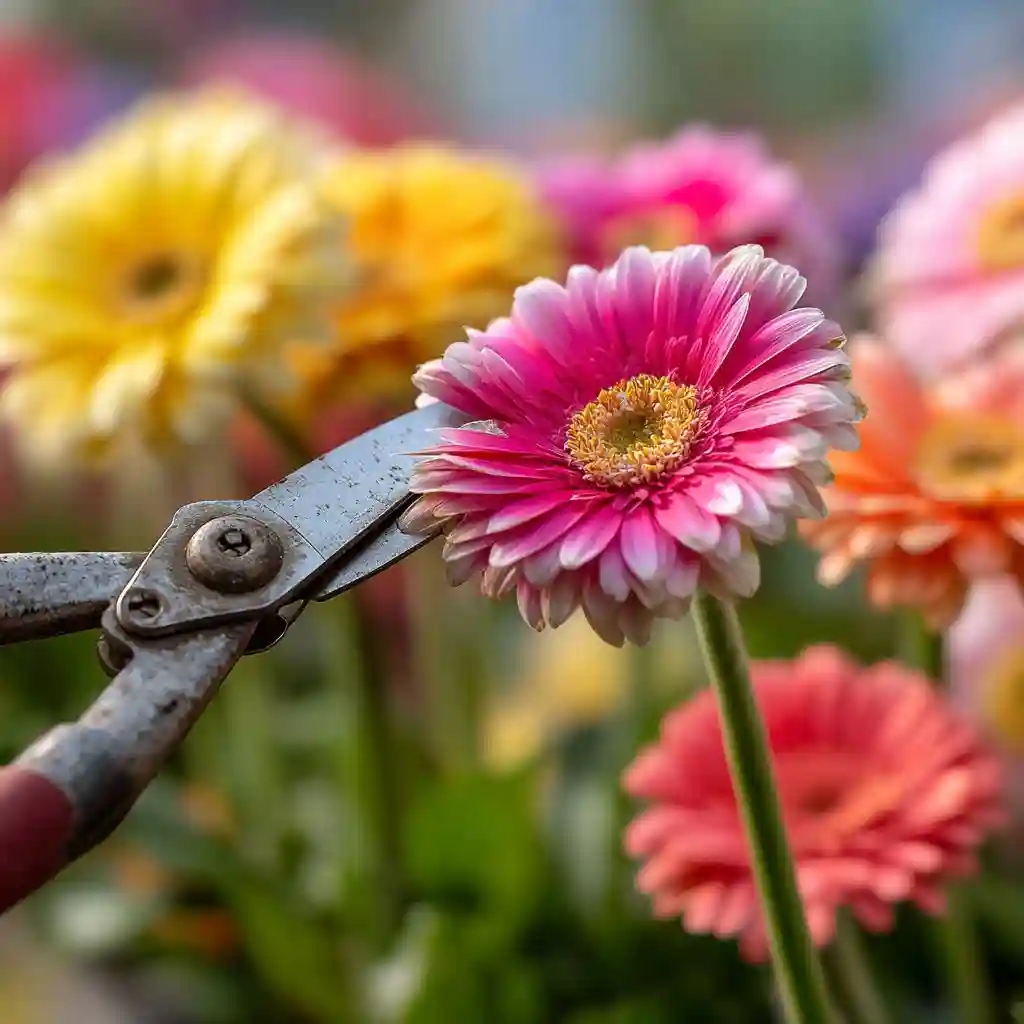
One of the most rewarding parts of Gerbera Daisy Care is seeing your plants bloom again and again. But to keep those flowers coming, you’ll need to deadhead spent blooms regularly.
Unlike some flowers, gerbera daisies don’t bloom nonstop. They take short breaks—typically two weeks—between flowering cycles. Removing old blooms helps redirect energy toward new flower bud development rather than maintaining aging blooms.
Use clean, sharp scissors or pruning shears to cut the stem all the way down to the base. For container-grown gerberas, you can also trim large central leaves to improve light penetration and airflow in the plant’s center.
If you’re harvesting for cut arrangements, snipping a few blooms also helps keep the plant focused on producing more.
Reminder: Each stem only holds one flower, so always remove the entire stem—not just the bloom.
5. Sun or Shade? Finding the Right Balance
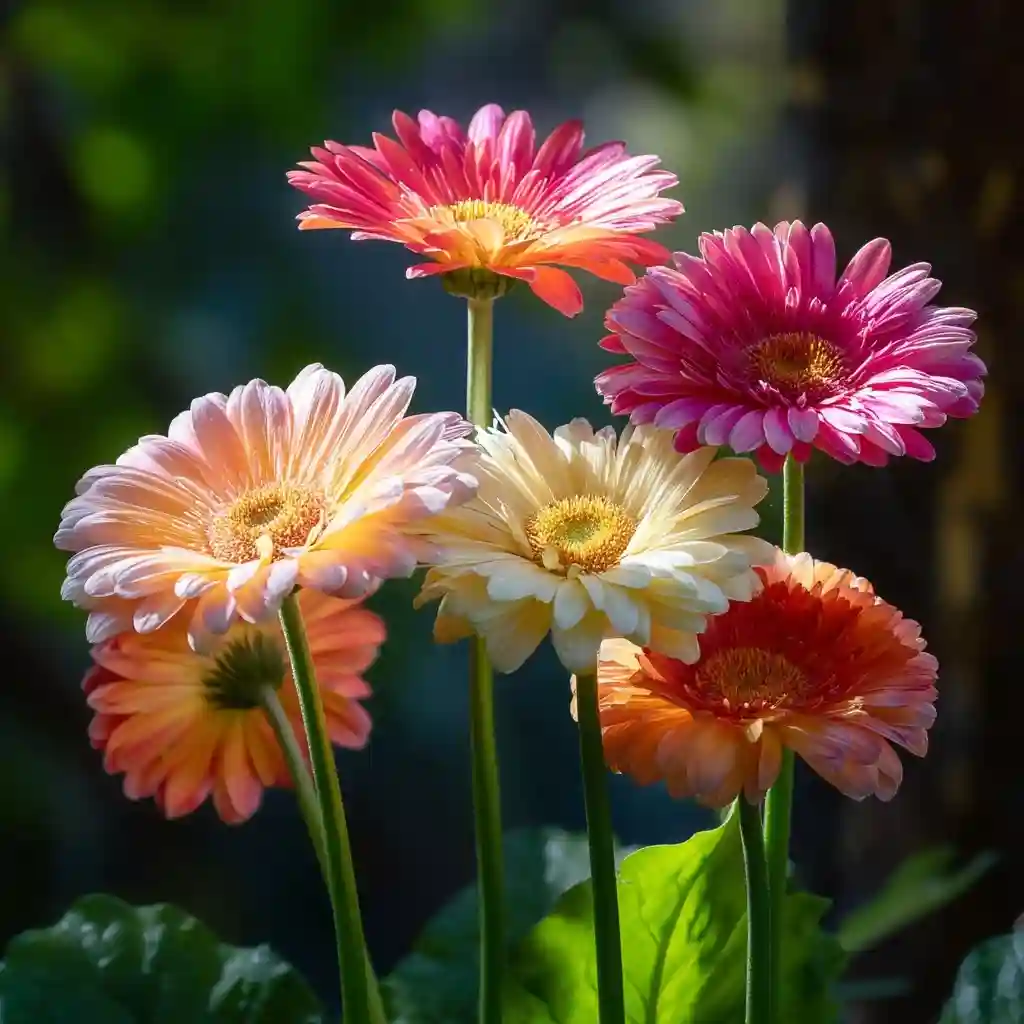
Light exposure is a critical element of proper Gerbera Daisy Care. These cheerful blooms need plenty of sun to thrive, but the right balance can vary depending on your climate.
In cooler regions, aim to give your gerberas at least 6 hours of full sun daily. Morning sun with some afternoon shade is ideal for promoting vibrant flowers and sturdy stems.
However, in hotter areas or during intense summer afternoons, too much direct sunlight can stress the plant and lead to leaf scorching. If your daisies are looking wilted or faded by mid-afternoon, provide some filtered shade or move containers to a slightly sheltered spot.
Container Tip: Gerberas in pots are easy to reposition as needed—giving you flexibility as the seasons shift.
6. How to Overwinter Gerbera Daisies Successfully
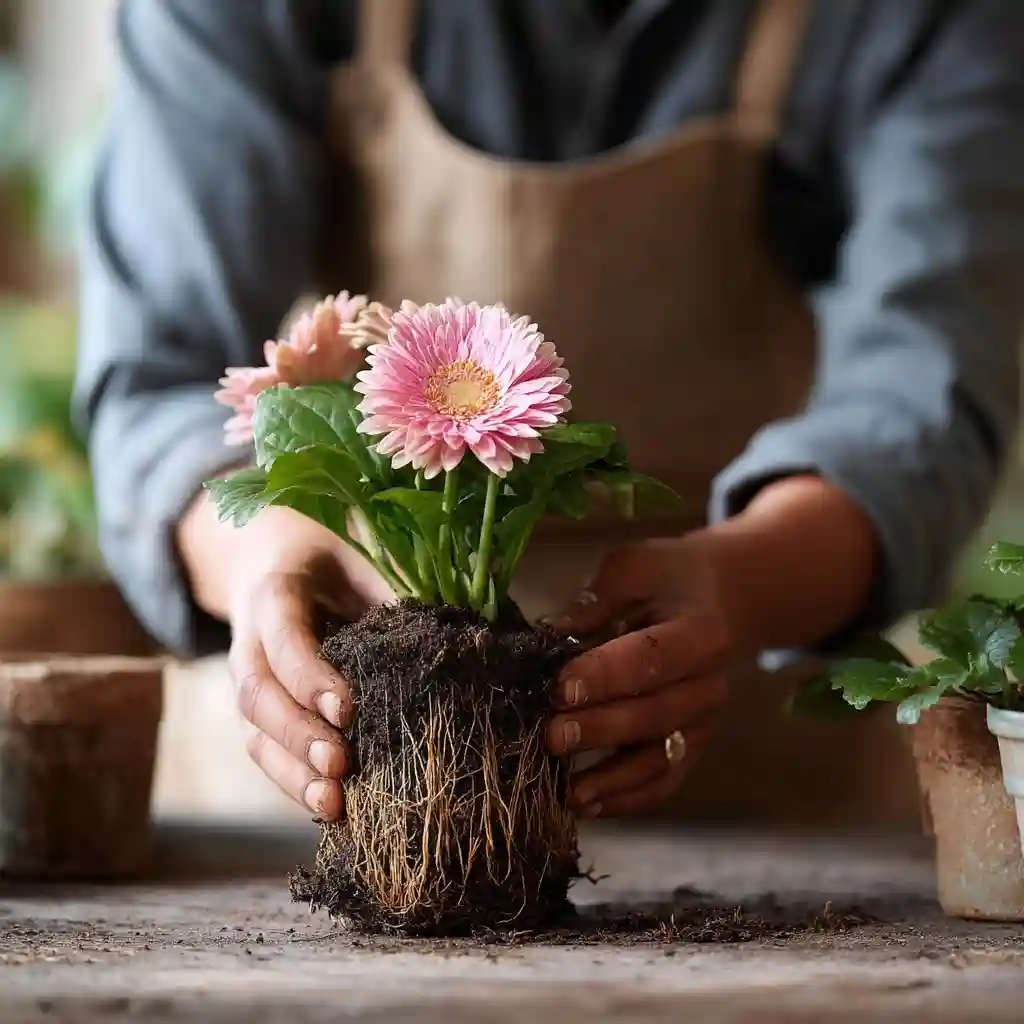
If you live in a region with frost or freezing winters, overwintering is an essential part of Gerbera Daisy Care. These tender perennials can’t survive cold temperatures outdoors and need special attention as the seasons change.
Start prepping your plants in early fall, ideally before the first frost. Carefully dig up your gerbera, remove excess soil from the roots, and trim off any remaining blooms. Be sure to leave the main taproot intact.
Repot the plant in a fresh, well-draining mix, and keep the crown level with the soil. Place the pot in a shaded spot outdoors during the day and bring it inside at night for a week or two to help it acclimate.
Once indoors full-time, provide bright indirect light, keep temperatures between 60–70°F (15–21°C), and water only when the top inch of soil is dry.
Important: Avoid fertilizing during winter dormancy, and be cautious not to overwater—gerberas are especially sensitive to soggy roots when resting.
7. Repel Slugs Naturally with Coffee Grounds
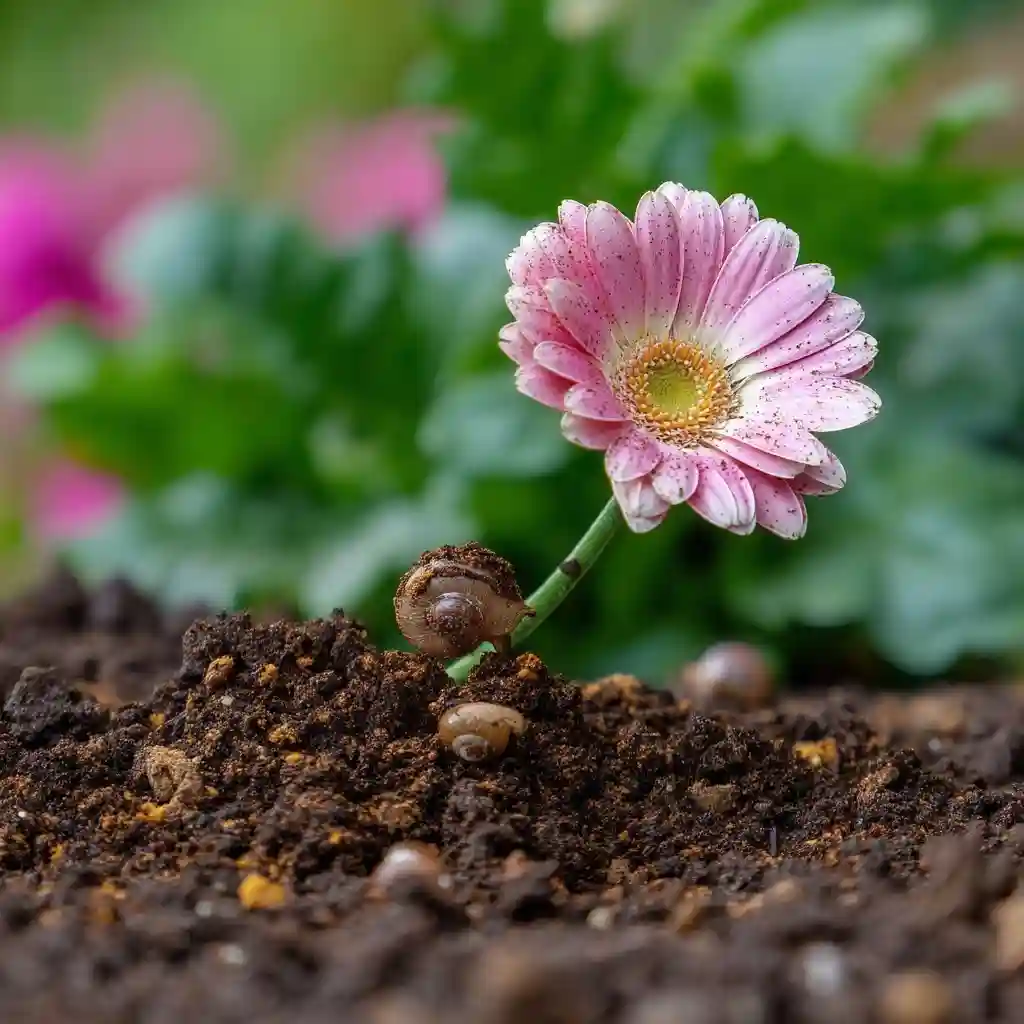
Slugs and snails can wreak havoc on your plants, making pest control an important part of Gerbera Daisy Care. One simple and eco-friendly solution? Coffee grounds.
Sprinkling used coffee grounds around the base of your gerbera daisies can create a natural barrier that slugs avoid. The texture is abrasive to their bodies, and the caffeine can be toxic to them in larger amounts. Even the smell tends to deter them.
Be sure to reapply the grounds after heavy rain or watering, as the effectiveness diminishes when they’re washed away.
Bonus Tip: This trick also works well around other slug-prone plants in your garden, so save your morning brew leftovers!
8. Extend Vase Life with Proper Harvesting Techniques
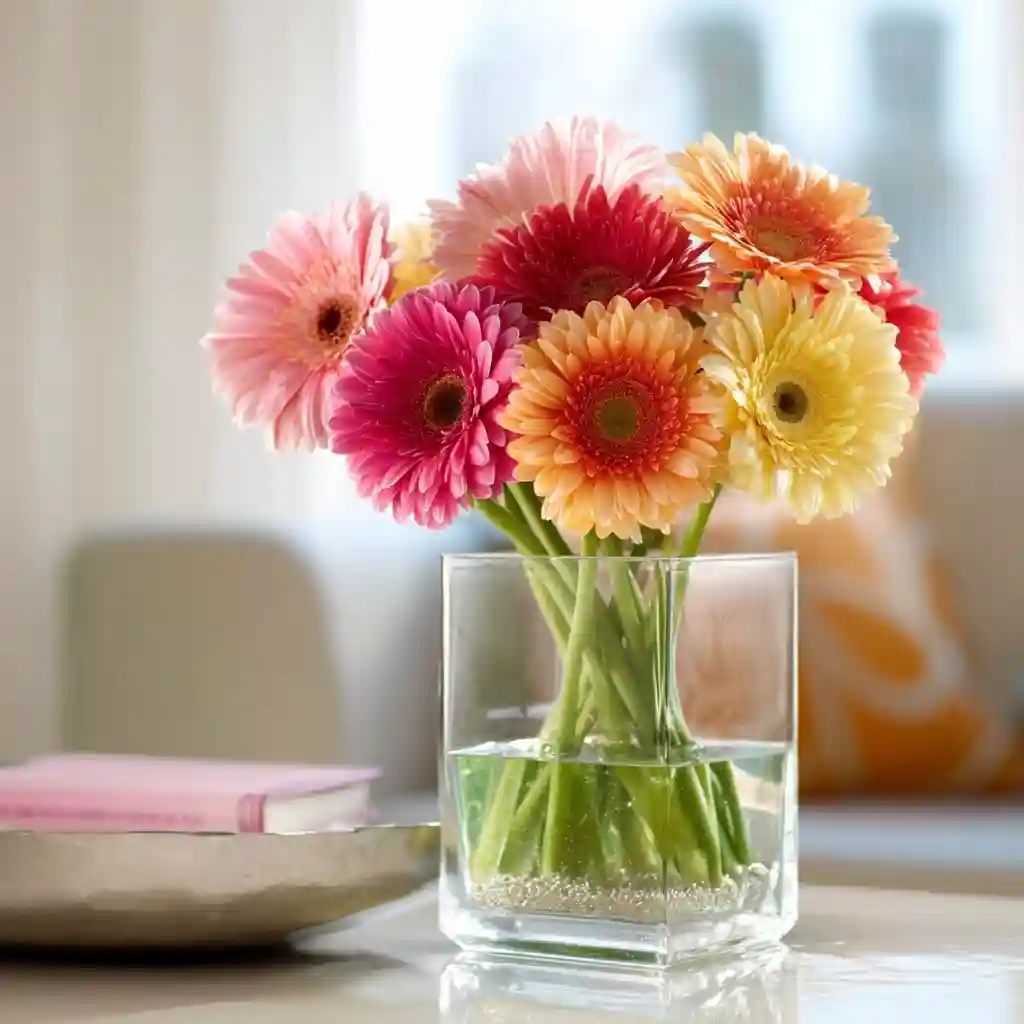
Cut flowers are one of the joys of Gerbera Daisy Care, but keeping those blooms fresh in a vase takes more than just water.
Start by cutting the stems at a 45-degree angle under water to prevent air from entering the stem and blocking water uptake. Prepare a vase solution using commercial flower food, or mix your own using 2 tablespoons of lemon juice, 1 tablespoon of sugar, and a quarter teaspoon of bleach in a quart of warm water.
Only submerge the bottom 1–2 inches of each stem—too much water will cause them to soften and bend.
After arranging your daisies, let them rest overnight in a cool space with indirect light. Change the water every two days and trim the stems slightly each time to improve absorption.
Key Reminder: Avoid placing the vase near heat sources, drafty windows, or direct sun. Gerberas are sensitive to temperature extremes even after harvest.
9. Common Gerbera Daisy Problems and How to Fix Them
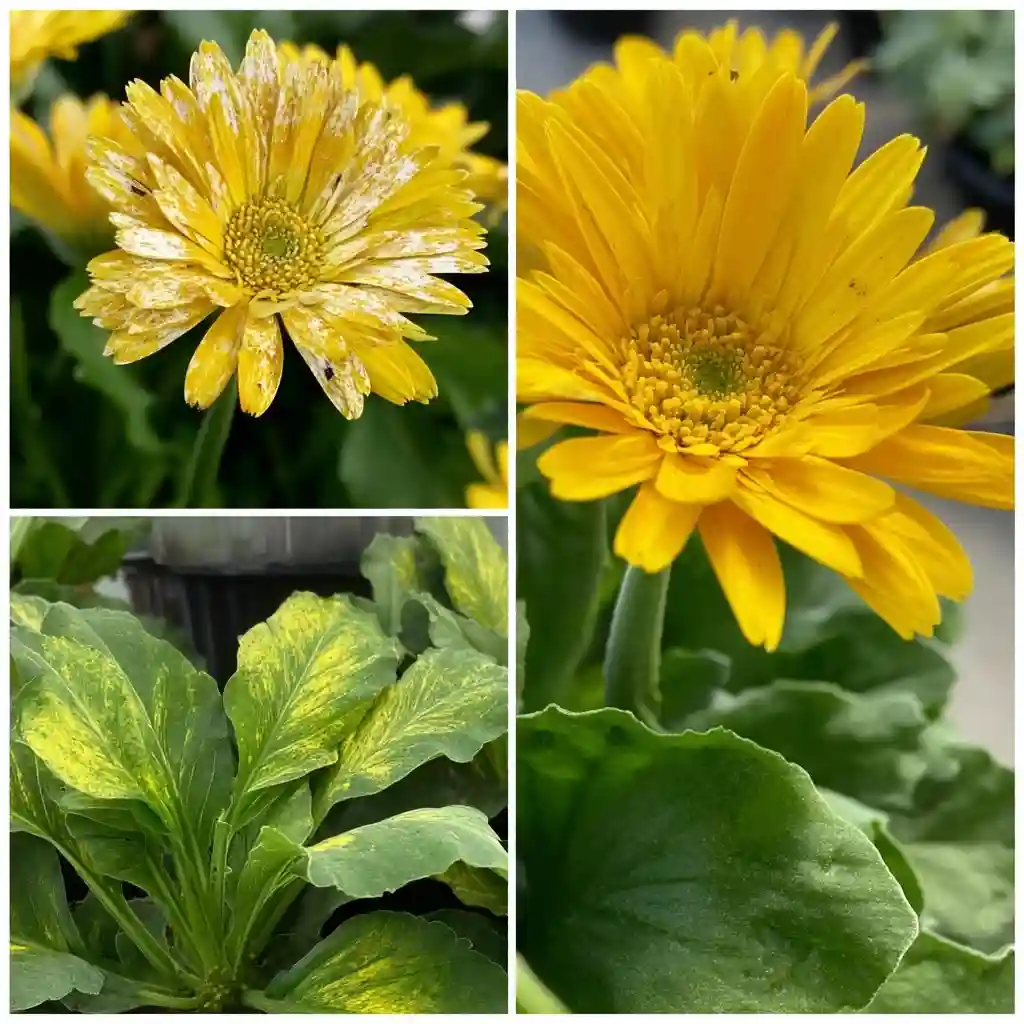
Even with the best Gerbera Daisy Care, occasional problems can crop up. The good news? Most issues are manageable once you identify the root cause. Here’s how to troubleshoot common signs of stress in your plants.
Wilting or Drooping Plants
Wilting is usually a watering issue—either too much or too little. Overwatering can lead to soggy roots and fungal infections, while underwatering causes dehydration.
- Water early in the day so the soil dries before nightfall.
- Make sure pots have proper drainage holes.
- For drooping flowers, check for nutrient stress or insufficient sunlight.
Tip: If your soil feels soggy for too long, repot using a better-draining mix.
Yellowing Leaves
Yellow leaves can signal a nutrient deficiency—usually nitrogen, magnesium, or iron.
- Apply a balanced, slow-release fertilizer in spring and fall.
- Use Epsom salts (1 oz per 5 gallons of water) for magnesium deficiency.
- For iron deficiency (especially in high-pH soils), apply a foliar spray of chelated iron.
Keep your soil pH between 6.1 and 7.0 for optimal nutrient uptake.
Browning Leaves or Flower Tips
This is often caused by overwatering or poor air circulation. It can also result from fungal diseases like powdery mildew or Alternaria leaf spot.
- Allow the topsoil to dry before watering again.
- Avoid overhead watering.
- Improve spacing between plants to increase airflow.
Use a fungicide if mildew or spotting spreads.
Curling Leaves
Leaf curl often indicates a calcium deficiency or very low pH. In extreme cases, it may also be caused by powdery mildew.
- Apply calcium nitrate in small, repeated doses.
- Test and adjust pH to stay above 5.5.
- Isolate infected plants and prune back any curled or damaged growth.
Pest and Disease Issues
Common pests and diseases in gerbera daisies include:
- Powdery Mildew: Appears as white residue on leaves. Improve airflow and apply fungicide if needed.
- Rhizoctonia Crown Rot: Brown lesions near the soil line; treat with sterilized soil and fungicide.
- Pythium Root Rot: Causes rapid wilting and root decay—avoid overwatering.
- Alternaria Leaf Spot: Brown specks on leaves; treat with copper-based or organic fungicides.
- Bacterial Leaf Spot: Dark, irregular lesions; reduce humidity and stop overhead watering.
- Viruses: Yellow patterns or distorted flowers—remove infected plants entirely.
Preventive Tip: Always sanitize your tools and avoid crowding your plants to reduce the risk of disease.
Conclusion
Gerbera Daisy Care doesn’t have to be complicated. With the right soil, proper watering, good sunlight, and consistent feeding, these stunning blooms will reward you with vibrant color for weeks on end. Don’t forget to trim spent flowers, monitor for pests or diseases, and give them a little extra love during the colder months.
Whether you’re growing them in pots, garden beds, or cutting them for display, a little attention goes a long way in keeping your gerberas healthy and happy.
Frequently Asked Questions (FAQ)
How often should I water gerbera daisies?
Water outdoor plants once a week, or when the top inch of soil dries out. Indoor plants typically need watering every 3–5 days. Always water at the base and avoid soaking the leaves
Can I grow gerbera daisies indoors?
Yes! Just be sure they get plenty of bright, indirect light and are planted in well-draining soil. Avoid overwatering and fertilize during the active growing season.
Why are my gerbera daisy leaves turning yellow?
Yellow leaves often signal nutrient deficiency—especially nitrogen, iron, or magnesium. Adjust your feeding routine and test your soil pH for optimal nutrient uptake.
Do gerbera daisies come back every year?
In USDA zones 8–11, they can survive year-round outdoors. In colder areas, treat them as annuals or overwinter them indoors.
Are coffee grounds safe for gerbera daisies?
Yes, used coffee grounds can help repel slugs naturally. Just use them sparingly and refresh the barrier regularly.
🌿 Love gardening inspiration? Follow me on Pinterest for bold plant ideas, tips, and seasonal color!
More Posts
